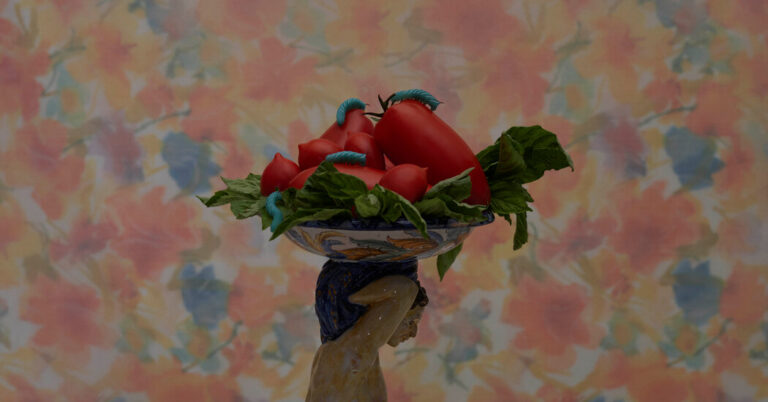Meanwhile, prices for olive oil have risen – in Europe, up to 50 percent higher this January compared to January last year – as production declines due to weather and disease, with millions of tree in Italy succumbed to the Xylella fastidiosa bacterium, which scientists believe may have been brought from Costa Rica to a coffee plant in 2008. And in perhaps the most direct hit to the country’s soul, pasta prices have soared worst in Italy last year, the government called emergency talks, and consumer advocates lobbied for a price cap. Later, it was determined that the companies were trying to recoup costs from buying marked-up wheat in the early stages of the war in Ukraine, a major producer. Prices are stabilized; life is back to normal. Maybe the pasta, at least, is safe – for now.
ABOUT AD 39 or so, the Roman historian Suetonius (born later in that century) recounts, a bridge spanned the Bay of Naples. It was more than three miles long, made of boats weighted down with earth, so that the young emperor Caligula could ride over the water, first on a horse wearing armor stolen from the tomb of Alexander the Great, and then in a chariot followed by a tree. military retinue. A tribute to human effort, and testament to its limits: Caligula was assassinated not long after, at the age of 28, and in AD 79, Vesuvius erupted. Black jets of hot gas and ash fell on the towns of Herculaneum and Pompeii, racing up to 450 miles per hour and reaching temperatures as high as 1,000 degrees Fahrenheit, hotter than the surface of Venus, enough heat to crack the bones and teeth and steam the soft tissue, to turn the flesh into a sifting mist. A skull excavated from Herculaneum was found to contain a dark, translucent substance that, upon analysis, revealed proteins normally present in the brain – the human mind, sealed within itself.
“We live in the shadow of Vesuvius,” Amedeo Colella, a 60-year-old local historian who designs food tours of Naples for a company called Culinary Backstreets, told me. “Even when we’re talking about the future, we’re talking in the present tense.” Is this a self-conscious romanticization, or is poetry the only rational response to living with a volcano looming on the horizon? Not to mention, even closer, about nine miles to the west, there’s the increasingly disturbing supervolcano known as Campi Flegrei (or Burning Fields), which mostly lies beneath the Bay of Naples. Half a million people live within immediate reach of the eruption. In the first 10 months of last year, more than 3,000 small earthquakes sent tremors through the region, raising fears of impending destruction. The government made evacuation plans.
The world is ending; the world goes on. In Naples, I booked a small room in a decaying 17th-century palazzo that had been equipped last century with an elevator, which could only be used by inserting a coin into a slot. There seems to be an open border between the past and the present. History traces the Italians I met. One said, “After all, we were only united in 1871,” as if it were only yesterday. When night falls, I ride through the dark streets on a Vespa, giddy with its cliché, ready to deliver myself to my maker. Italians from other parts of the country inform me that Neapolitans are the worst drivers in the world, but I think they are the best, for how else do they cheat death at every turn? And then I realized that what appears to me as close to collision is in fact virtuosic negotiations of space, knowing exactly how close you can get.
In a field in the Monti Lattari where ash fell nearly two millennia ago, Abagnale lifted a handful of earth. The explosion “created a lot of damage, but it also gave us something,” he said. A catastrophe that occurred nearly 1,500 years before the tomato appeared in Italy created the kind of mineral-rich soil that would one day be essential to its development, and thus to its incorporation into pasta and the birth of a whole cook. Today, at the dining table in Sant’Antonio Abate, we eat. Once “pasta was reserved for feast days,” writes Zanini De Vita. Only after Italy recovered from the tolls of war, when the economy began to hum again in the late 1950s and early ’60s, did rural people have it whenever they wanted. To think of pasta al pomodoro as an everyday, staple dish, take it for granted: It’s a new kind of privilege.
At the end of the meal, we are supposed to tear off pieces of bread to wipe off any sauce still clinging to the plate, a ritual gesture the Italians call scarpetta. It’s a reminder of the days of need, when every morsel counted. Abagnale went one better and brought the giant pan to the table, with valuable deposits like a dull sunset, and we took our bread and tossed it.
Set design by Victoria Petro-Conroy. Retouching: Anonymous Retouch. Digital tech: Lori Cannava. Photo assistant: Karl Leitz. Set designer’s assistant: Natasha Lardera
